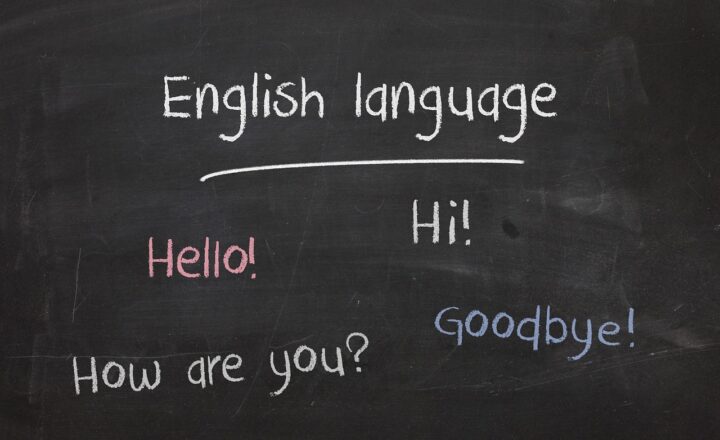Cultural Clashes: The Beauty and Conflict of Multicultural Societies
November 19, 2024

In an increasingly interconnected world, multicultural societies are becoming the norm rather than the exception. Countries and cities across the globe are witnessing an influx of diverse cultures, languages, traditions, and beliefs. While this melting pot of communities offers a rich tapestry of experiences and perspectives, it can also lead to cultural clashes and conflicts.
This article delves into the nuances of multiculturalism, exploring both the beauty and the conflict inherent in living within diverse societies. We will examine the challenges and opportunities that arise from cultural interactions and provide insights on how to foster harmony in the midst of differences.
1. Understanding Multiculturalism
Multiculturalism can be defined as the presence and co-existence of multiple cultural groups within a single society. This concept is not limited to ethnicity but encompasses various aspects such as language, religion, customs, and ideologies. The global migration trend has accelerated multiculturalism, as people seek better opportunities, escape conflicts, or pursue education abroad.
Key features of multicultural societies include:
- Diversity of Thought: Multicultural societies are characterized by a plethora of viewpoints that can enrich discussions and decision-making processes.
- Cultural Exchange: Different cultures bring unique traditions, foods, and art, fostering a vibrant cultural exchange and an opportunity to learn from one another.
- Social Cohesion Challenges: Despite the advantages, multiculturalism also presents challenges, such as prejudice, stereotypes, and divisions between groups.
Understanding what multiculturalism entails is crucial in navigating the complexities it presents. By fostering dialogue, societies can start to bridge the gap between differing cultures.
2. The Beauty of Multicultural Societies
Multicultural societies offer a variety of beautiful aspects that enhance the human experience. Here’s a closer look at some of these benefits:
- Culinary Diversity: Imagine living in a city where the flavors of the world are at your fingertips. Multicultural societies allow residents to experience an array of culinary delights. From Indian curry to Italian pasta, the availability of diverse food can enrich lifestyles and enhance cultural appreciation.
- Cultural Festivals and Events: Major cities frequently celebrate these twists in their constituencies with food, music, dance, and customs from various cultures. These festivals often promote unity and pride among diverse communities while allowing individuals to share their heritage with others.
- Innovative Collaborations: The integration of diverse perspectives leads to innovation and creativity. In business and art, multicultural collaborations can inspire new ideas and solutions that may not emerge within homogeneous groups.
Such facets make multiculturalism an emblem of beauty in human society and demonstrate how diversity can enhance quality of life.
3. The Conflict of Cultures
Despite the many benefits, multicultural societies also face significant conflicts arising from cultural differences. Addressing these conflicts is essential for building cohesive communities.
Some common conflicts include:
- Prejudice and Discrimination: Differences in culture, race, or religion can lead to prejudiced attitudes and discriminatory practices. These divisions create barriers to social integration and harmony.
- Cultural Appropriation: When elements of one culture are adopted by another outside of their original context, it can lead to feelings of exploitation or disrespect among individuals from the originating culture.
- Language Barriers: Communication can be a significant hurdle in multicultural settings. Misunderstandings and language barriers can fuel resentment and conflict among different cultural groups.
These conflicts can undermine social cohesion, making it vital to address and mitigate these challenges for a harmonious coexistence.
4. Strategies for Resolving Cultural Clashes
Addressing conflicts in multicultural societies requires intentional efforts and strategies. Here are some approaches that can be adopted:
- Promote Cultural Awareness: Initiating education campaigns about different cultures can foster understanding and respect. Schools and community organizations should prioritize diversity education and awareness programs to combat ignorance and misconceptions.
- Encourage Open Dialogue: Creating platforms for dialogue between cultures encourages the exchange of ideas and reinforces understanding. Town halls, workshops, and cultural exchange programs can facilitate these discussions and help dispel fears and stereotypes.
- Embrace Diversity in Leadership: Having diverse representation in leadership roles can ensure that policies and practices reflect a multicultural perspective. This inclusion fosters belonging among all community members and strengthens social ties.
These strategies can help mitigate conflicts and enhance the richness of multicultural societies by fostering unity through diversity.
5. The Future of Multicultural Societies
As globalization continues to reshape demographics, the future of multicultural societies hinges on our ability to adapt and innovate solutions. Embracing diversity and leveraging its potential must be coupled with conscious efforts to address inequalities and grievances that arise.
The path to thriving multicultural societies includes:
- Nurturing Inclusivity: Societies will need to prioritize inclusivity by creating environments where all cultures and groups feel valued and protected, ensuring equal opportunities for all participants in society.
- Adapting to Change: As cultural dynamics shift, societies must remain agile and responsive to cultural needs, adapting policies and practices accordingly to support harmonious cohabitation.
- Building Resilience: Creating systems that promote resilience amid adversity can empower communities to address conflicts when they arise, fostering sustainable solutions for long-term integration of diverse cultures.
Continuing on this trajectory can enable societies to navigate the complexities of multiculturalism, enhancing collective global understanding.
Conclusion
Cultural clashes in multicultural societies are inevitable; however, they are not insurmountable. By recognizing the beauty that diversity brings while also addressing its challenges, societies can create a harmonious coexistence that benefits everyone involved. Understanding various cultures, fostering dialogue, and implementing strategies for inclusion can pave the way for a more united approach to multiculturalism.
As we embrace diversity, let us aim to cultivate respect, tolerance, and celebration for the multifaceted human experience that enriches our lives and communities. Together, we can navigate the beauty and conflicts of multicultural societies, celebrating our differences while building a collective future based on mutual respect and understanding.








